Properly Drying Seeds Before Planting
Tips for Drying Seeds Before Planting: Grow Healthier Plants
Plants
When it comes to planting seeds, many gardeners overlook the importance of adequately drying their seeds before planting them. Seeds can vary in shape and size. Regardless of their appearance, it's essential to provide appropriate care to seeds if you intend to preserve them for future use. It's important to note that proper drying of seeds is crucial for maintaining their viability and preventing the growth of mold or bacteria. By using the appropriate method of drying seeds before planting: grow healthier plants, you can ensure the longevity and successful growth of your seeds.
Outline
1. Why Should You Dry Seeds Before Planting?
1.1 Removes Moisture
1.2 Increase Germination
1.3 Extends Shelf Life
1.4 Prevents Cross-Contamination
2. Methods of drying seeds before planting: Growing healthier plants
2.1 Air-drying
2.2 Oven drying
2.3 Dehydrator
2.4 Silica gel
3. Tips To Dry Seeds Before Planting
3.1 Harvest Seeds at the Right Time
3.2 Clean and Sort Seeds
3.3 Stir Seeds Daily
3.4 Test for Dryness
3.5 Store Seeds in a Cool, Dry Place
4. Conclusion
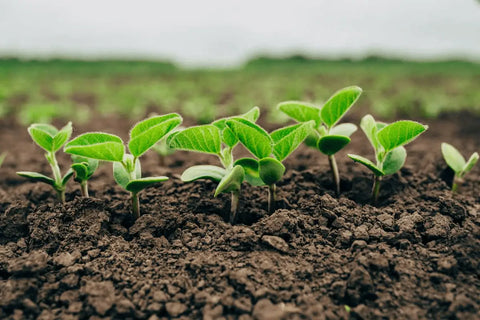
1. Why Should You Dry Seeds Before Planting?
There are several reasons why you should dry your seeds before planting them. Seeds that are too moist are prone to rot and fungal growth, which can kill the seed and prevent germination. Drying seeds also helps to extend their shelf life, making it easier to store and preserve seeds for future use. Here are some of the main benefits of drying seeds before planting. Let’s grow healthier plants with us!
1.1 Removes Moisture:
Seeds naturally contain moisture, which can lead to mold and fungus growth if they are not adequately dried. By drying your seeds, you remove excess moisture and help prevent these issues.
1.2 Increases Germination Rate:
When seeds are properly dried, they are more likely to germinate successfully. Excess moisture can inhibit germination, while dry seeds have a better chance of sprouting.
1.3 Extends Shelf Life:
Dried seeds can be stored for longer periods without losing viability. This means that you can save seeds from one growing season to the next, or share them with other gardeners.
1.4 Prevents Cross-Contamination:
When seeds are wet, they can stick together or transfer moisture and bacteria to other seeds. By drying your seeds before planting, you reduce the risk of cross-contamination and ensure that each seed has the best chance of success.
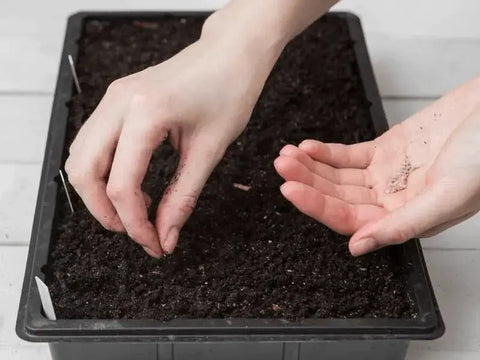
2. Methods of drying seeds before planting: Grow healthier plants
There are several methods of drying seeds, each with its own advantages and disadvantages. Listed below are some of the frequently used techniques:
2.1 Air-drying:
Air-drying is perhaps the most common method of drying seeds. It's simple and requires only a few materials. To air-dry seeds, spread them out on a piece of paper or a screen. Position them in a well-aerated place, far from direct sunlight. Make sure that the seeds are spread out evenly, with no clumps or clusters.
Air-drying can take several days, depending on the size and moisture content of the seeds. It's important to check the seeds regularly and remove any that show signs of mold or rot.
2.2 Oven drying:
Oven drying is a faster method of drying seeds, but it requires more equipment. To oven-dry seeds, spread them out on a baking sheet. Set the oven to a low temperature (around 100-110°F) and place the baking sheet inside. Leave the oven door slightly ajar to allow for ventilation.
Oven drying usually takes a few hours, but it's important to keep an eye on the seeds. Make sure that they don't overheat, as this can damage their viability.
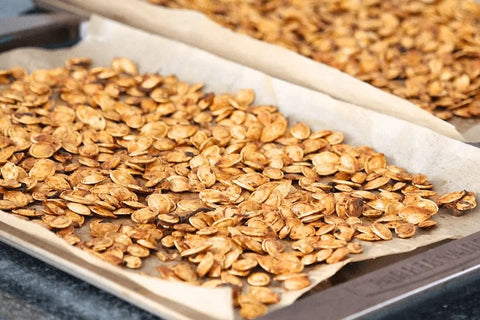
2.3 Dehydrator:
A dehydrator is a machine designed specifically for drying fruits, vegetables, and other foods. It can also be used to dry seeds. To use a dehydrator, spread the seeds out on the trays and set the machine to a low temperature (around 100-110°F). Leave the dehydrator running for several hours and check the seeds periodically.
Dehydrators are a convenient option for those who frequently dry seeds or other foods. They are also more efficient than air-drying or oven-drying, as they can dry seeds evenly and quickly.
2.4 Silica gel:
Silica gel is a desiccant that can be used to dry seeds. To use silica gel, place the seeds in a small, airtight container with a few packets of silica gel. Close the container tightly and leave it for several days. Silica gel absorbs moisture from the air, drying the seeds in the process.
Using silica gel is a good option for those who have limited space or who want to dry seeds quickly. It's also reusable, so it's a cost-effective option in the long run.
3. Tips To Dry Seeds Before Planting
Let's explore some tips for drying seeds before planting effectively.
3.1 Harvest Seeds at the Right Time:
The first step to drying seeds is to harvest them at the right time. This will vary depending on the type of plant you are growing, but in general, you want to wait until the seeds are mature and dry on the plant.
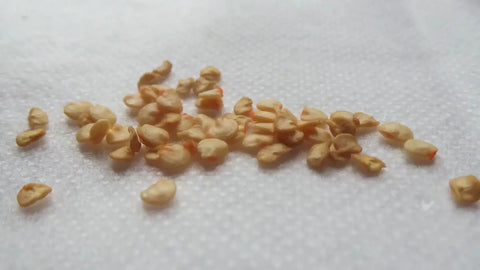
3.2 Clean and Sort Seeds:
Before drying your seeds, it's important to clean them and remove any debris or plant matter. You can do this by placing the seeds in a sieve or strainer and rinsing them under cold water. Once they are clean, sort the seeds by size and shape.
3.3 Stir Seeds Daily:
While your seeds are drying, stir them daily to ensure that they dry evenly and prevent clumping. This will also help prevent mold and fungus growth.
3.4 Test for Dryness:
After a week or two, test your seeds for dryness by pressing a few between your fingers. If they are hard and brittle, they are ready to store. If they are still soft or pliable, continue drying them for a few more days.
3.5 Store Seeds in a Cool, Dry Place:
Once your seeds are dry, store them in a cool, dry place in an airtight container. Label the container with the type of seed and the date you harvested them.
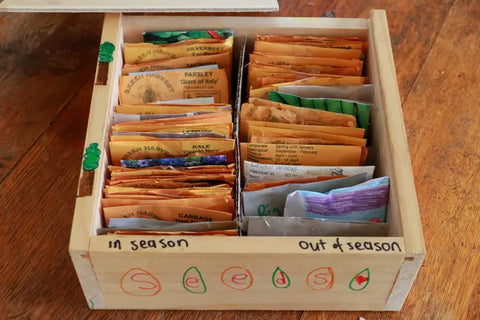
4. Conclusion
Drying seeds before planting is a crucial step to grow healthier plants. By removing excess moisture, you can prevent mold and fungus growth, increase germination rates, extend shelf life, and prevent cross-contamination. Follow the tips for drying seeds before planting: grow healthier plants above to properly dry your seeds and enjoy a bountiful harvest! And if you need some reliable seeds, don't forget to visit The Rike for a wide selection of high-quality seeds that are sure to grow into healthy, thriving plants. Happy planting!





Leave a comment